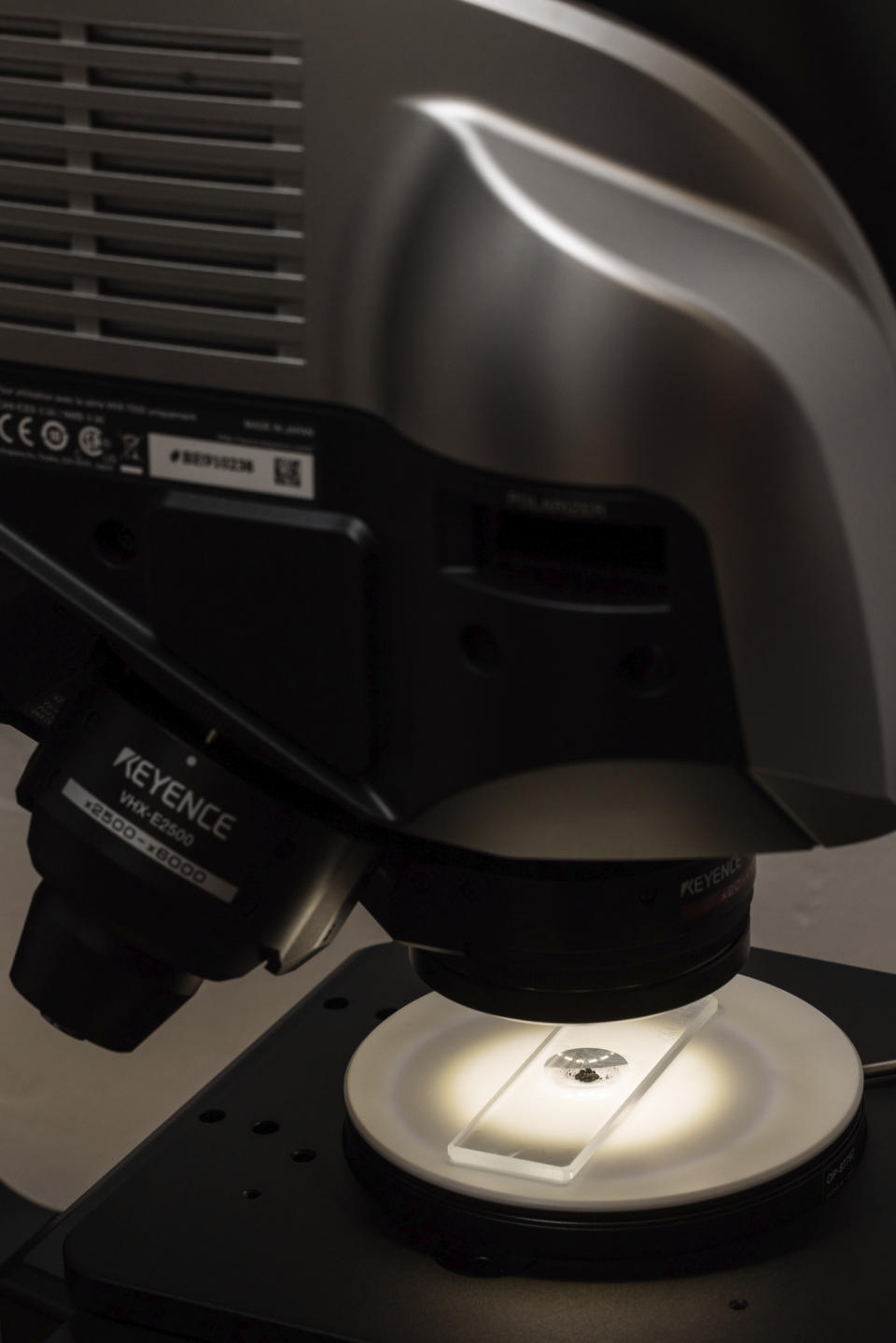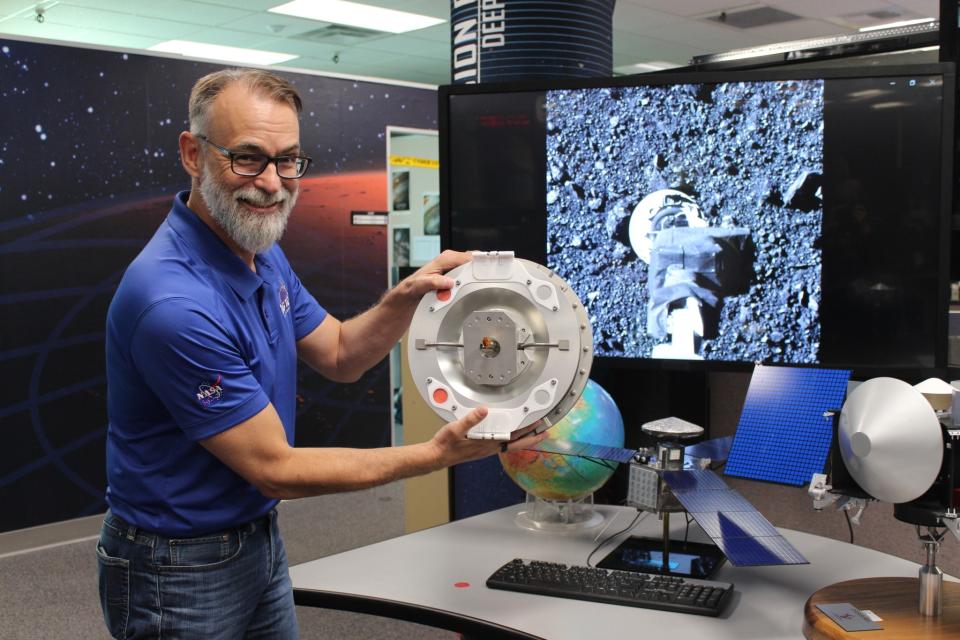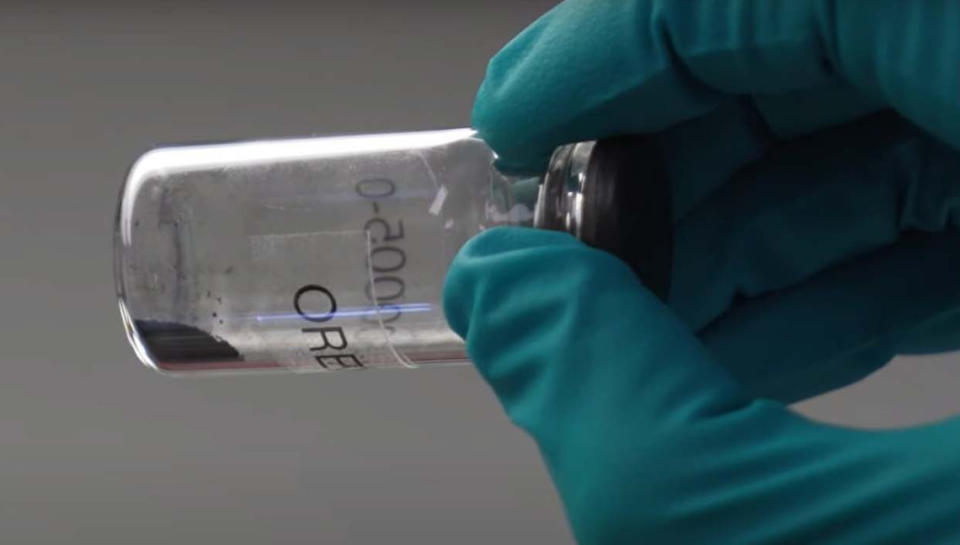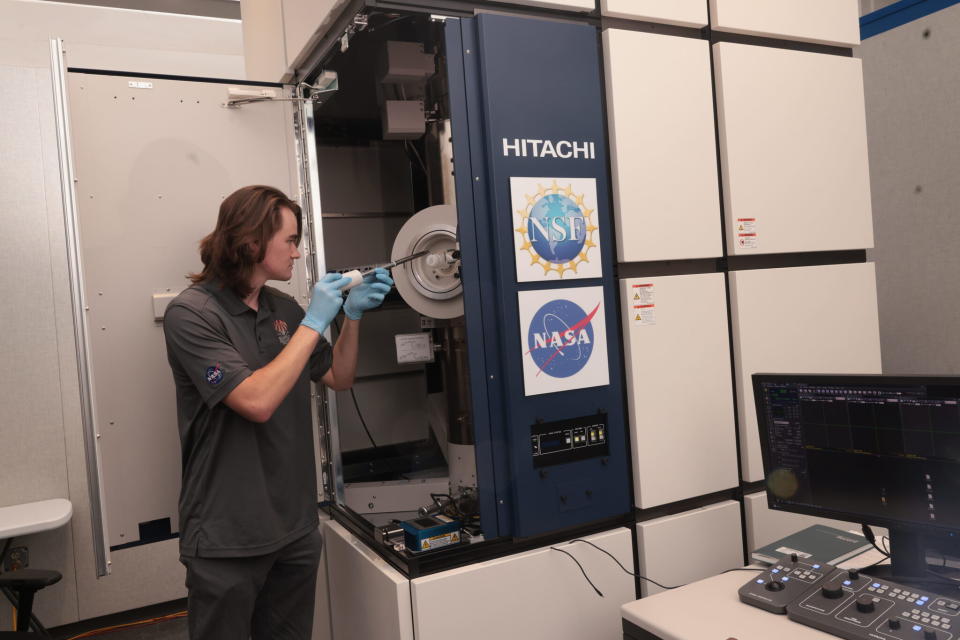Scientists are now inspecting hooked, bagged and tagged bits and pieces of the asteroid Bennu, the cosmic mother lode provided by NASA’s Origins, Spectral Interpretation, Resource Identification and Security – Regolith Explorer mission.
Known in acronym astro-speak as OSIRIS-REx, that seven-year journey brought the goods home via a sample return bus that came to a stop and parachuted into a remote stretch of Defense Department Utah on September 24, 2023. Test and training range. These distant specimens are believed to contain the remnants of the formation of the solar system 4.5 billion years ago.
Space.com spoke to two leading scientists now focused on extracting what illuminates those dark asteroid particles and figuring out how these materials exported from Bennu came to be. But also what insights they provide for the origin of the worlds within our solar system, including Earth.
Related: NASA’s first asteroid sample is rich in carbon and water, the OSIRIS-REx team finds
Pristine reservoir
The scene is the Kuiper-Arizona Laboratory for Astromaterials Analysis at the University of Arizona. Researchers there use instruments to investigate what the OSIRIS-REx collectibles tell them, down to the atomic scale.
To start, scientists at the University of Arizona received 200 milligrams – about seven-thousandths of an ounce – of the asteroid Bennu sample for analysis.
“We have more than 1,000 particles larger than half a millimeter, 28 particles larger than a centimeter, and the largest particle is 3.5 centimeters,” said Dante Lauretta of the University of Arizona, the principal investigator of OSIRIS-REx . “So a great collection full of really big stones.”
Bennu samples contain abundant amounts of water locked in minerals such as clay and are also rich in carbon, nitrogen, sulfur and phosphorus. OSIRIS-REx samples represent the largest pristine reservoir of such material on Earth.
“We’re going to be busy for a long time,” Lauretta told Space.com. “This is a huge amount of sample for us,” he said, adding specimens of Bennu are also now being studied around the world.

Distinctive and different
What is found will be described in detail at the 55th Lunar and Planetary Science Conference held next month in The Woodlands, Texas. More than 70 abstracts of scientific results were submitted to that prestigious meeting, Lauretta said. “From March, all that will be released to the world. So the team is working furiously,” he said.
An early finding is that the asteroid material being inspected looks isotopically “distinct and different from anything else in our meteorite collection, which is exciting,” Lauretta said. “There’s a whole richness of material that we’ll never get access to if we just rely on meteorites,” Lauretta added.
Most meteorites that survive their fiery fall through Earth’s atmosphere and are recovered are pieces of asteroid. But pinpointing the space rocks from which they come is not easy.


Phosphate crust
OSIRIS-REx samples have a phosphate crust never before seen in meteorites, Lauretta said. These high concentrations of phosphate have been detected on alien ocean worlds, he said.
For example, Saturn’s moon Enceladus contains phosphates, a key building block of life, at levels much higher than those of Earth’s oceans.
“Asteroid Bennu may be a fragment of an ancient ocean world. That’s still highly speculative. But it’s the best clue I have right now to explain the origin of that material,” Lauretta said.


Connect the dots
Unraveling the history of asteroid Bennu is a surreal undertaking, says Thomas Zega, professor at the university’s Lunar and Planetary Laboratory and scientific director of the school’s Kuiper-Arizona Laboratory for Astromaterials Analysis.
Zega points to the decades that have gone into the OSIRIS-REx mission, from a detailed proposal to the extreme study of the asteroid samples in the laboratory.
“Honestly, there’s rarely a day that goes by where I don’t consider myself incredibly lucky to actually be able to do this for a living,” Zega told Space.com. ‘I pinch myself. It’s a blessing.’
By any definition, the OSIRIS-REx mission has been a phenomenal success, Zega added, “and now that we can use some of the most advanced analytical tools in the world to measure the samples, that’s pretty remarkable.”
Missions like OSIRIS-REx, in addition to educating scientists about Bennu’s origins, Zega noted, “really help us connect the dots between other meteorites that we have in our Earth collections,” he said, “and perhaps the asteroids where they come from. in the asteroid belt between Mars and Jupiter.”


Quick look
Zega was a member of the “quick-look” team that participated in the opening of the OSIRIS-REx sample return capsule after delivery to NASA’s Johnson Space Center in Houston, Texas.
What was found by experts from the curation team was a layer of fine-grained dust from the sampling maneuver at Bennu on the returned electronic deck and the outside of the Touch-and-Go Sample Acquisition Mechanism (TAGSAM) – the air filter-like thing on the end of the OSIRIS- REx robotic arm that ensnared most of the Bennu fragments.
One aspect of Zega’s surreal encounter with Bennu involves leaving Texas and flying back to Arizona with a prearranged, small portion of the asteroid’s sample.
After all, Zega’s duties as a carrier are due to the fact that the University of Arizona is home to some two decades of work to move OSIRIS-REx from bid to ballistic penetration of asteroid material.
Cover of darkness
“There was no way it could have gotten into checked baggage! It went in my backpack that I took on the plane. It was a small amount of material, sealed in a bag that was itself sealed in a vial filled with nitrogen. So it was all protected,” Zega recalls.
When Zega landed in Tucson overnight, the first thing Zega did was place the sample in a dry nitrogen box at the university laboratory for protection and preservation.
“And then I went home, ate and went to sleep,” Zega said.
Zega said he joked that the whole thing was under the cover of darkness. “Nobody was any the wiser that someone had just brought the first sample of the first NASA asteroid sample back to Tucson,” he said.
Stay tuned
RELATED STORIES:
– Finally! NASA finally loosens the lid of the asteroid Bennu sample capsule after a battle with stuck fasteners
– OSIRIS-APEX prepares for its first encounter with the Sun on its way to asteroid Apophis
– NASA’s OSIRIS-REx lands samples from asteroid Bennu on Earth after historic 6 billion kilometer journey
Last month, on January 10, the OSIRIS-REx TAGSAM head filled with Bennu bits was fully opened by NASA curators. That last step got off to a slow start due to some fiddly fasteners that prevented a look at the entire load of asteroid collectibles.
Now on tap will release a catalog of all Bennu samples later this year, allowing scientists and institutions around the world to submit requests for research into Bennu bites from the spacecraft.
In the meantime, Lauretta and Zega, together with colleagues, are busy assessing Bennu specimens.
Teams of university students and teachers use a wide range of options, from optical and electron microscopes to a newly purchased tool.
A powerful nanoSIMS instrument is operational, providing stunning insights into isotopes (different variations of atoms) to help interpret how each specific component in the Bennu sample formed.
“A lot of cool things are happening in the next few months,” Lauretta said. “So stay tuned.”